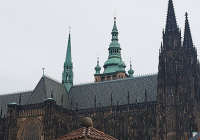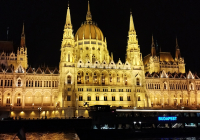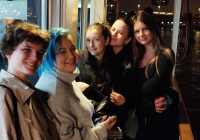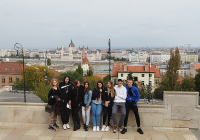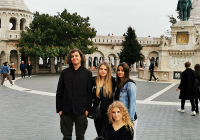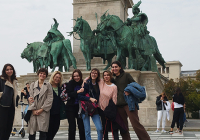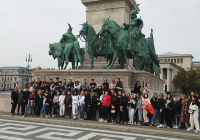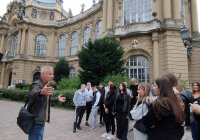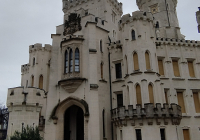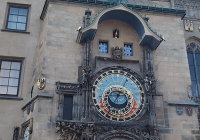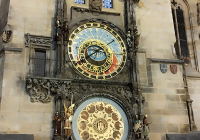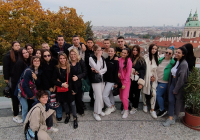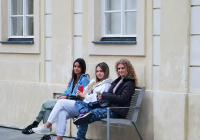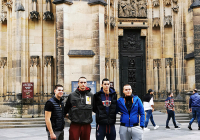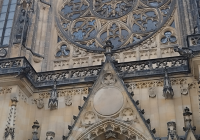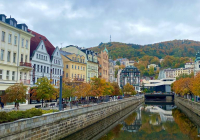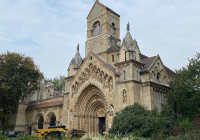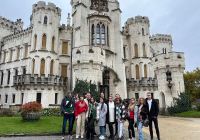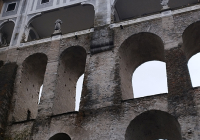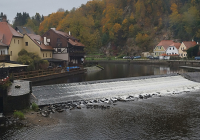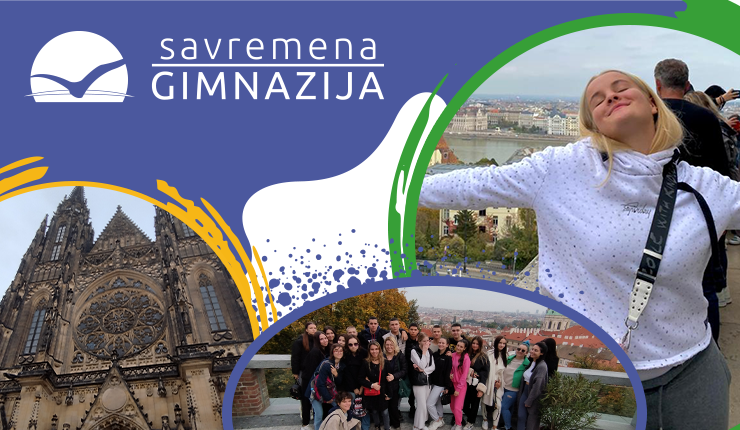
Third-grade students of Savremena Gimnazija recently returned from an exciting study trip where they visited Hungary and the Czech Republic. During their five-day stay, they had the opportunity to visit Budapest, the capital of Hungary, where they visited Heroes' Square, Vajdahunyad Castle, Buda Castle and Fisherman's Bastion, while in the Czech Republic they enjoyed the beauties of Prague, including Prague Castle, Charles Bridge, Franz Kafka's House, Prague Astronomical Clock, and then they visited other locations in the Czech Republic: Karlovy Vary, Hluboka Castle and the small town Krumlov.
Budapest tour: Night cruise on the Danube and the fairytale Fisherman's Bastion as the main attractions
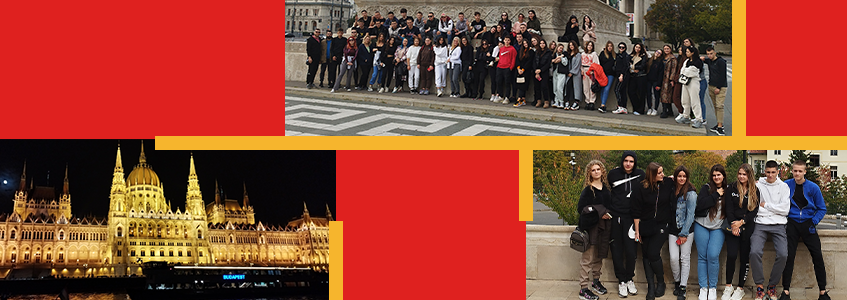 Third-graders of Savremena began their tour of Budapest by visiting one of the city's main squares, Heroes' Square, which is dedicated to the founders of Hungary and other figures who played an important role in Hungarian history. Near this square, there is the Museum of Fine Arts, which has one of the largest collections of works by Spanish painters, the Museum of Contemporary Art, the zoo, as well as the largest and main city park, where Vajdahunyad Castle is located. This castle is actually a copy of Romanian castles and was originally made of cardboard for the Millennium celebration. However, the Hungarians decided to build the castle completely. It is very interesting because we recognise several building styles on it. It is surrounded by a beautiful lake, which turns into an ice rink during the winter. In the courtyard, there is also the Statue of Anonymous and he is believed to have written the early history of the Hungarians.
Third-graders of Savremena began their tour of Budapest by visiting one of the city's main squares, Heroes' Square, which is dedicated to the founders of Hungary and other figures who played an important role in Hungarian history. Near this square, there is the Museum of Fine Arts, which has one of the largest collections of works by Spanish painters, the Museum of Contemporary Art, the zoo, as well as the largest and main city park, where Vajdahunyad Castle is located. This castle is actually a copy of Romanian castles and was originally made of cardboard for the Millennium celebration. However, the Hungarians decided to build the castle completely. It is very interesting because we recognise several building styles on it. It is surrounded by a beautiful lake, which turns into an ice rink during the winter. In the courtyard, there is also the Statue of Anonymous and he is believed to have written the early history of the Hungarians.
The night cruise on the Danube, during which they enjoyed one special Hungarian dish, left the most impressive impression on Savremena’s third-year students.
They visited the Buda Castle, which was the main strategic centre in the past, which is why it was conquered and liberated many times, and then they headed to the Royal Castle, where they visited the Budapest History Museum and the National Gallery.
The Fisherman's Bastion seemed like a fairy tale to them, as if it was built in the distant past, and not in 1905. It got this name because fishermen were in charge of defending that part of Budapest. It consists of seven towers, from which there is a wonderful view of the Parliament, the Danube and Pest. Here is also Matthias Church, which was turned into a mosque by the Turks during their rule, so the interior of the church is painted with scenes from the Quran. Cobblestones and alleys give the impression of the ancient past.
Savremena’s third-year students were delighted with the beauty of Prague
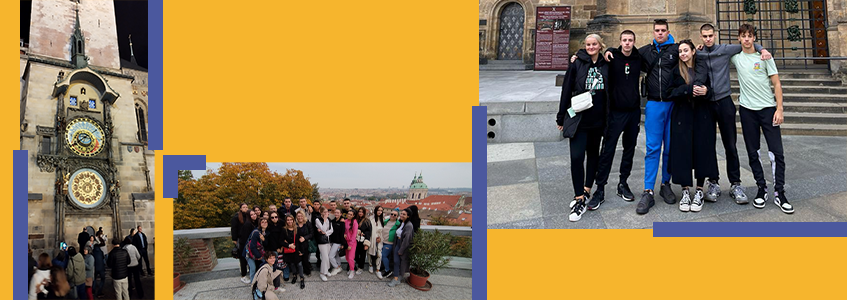 After a short stay in Budapest, students went to Prague, a city full of beautiful and cheerful buildings from different periods – from the Renaissance, through the Baroque and Rococo, all the way to the 20th-century period, perfectly restored and maintained. There were also romantic streets paved with cobblestones, miraculously preserved, if we take into account the millions of tourists who walk down those streets every day. Old-timer taxis and carriages, which you can use for a ride around the city, give it a special charm. When you step into Prague and see all those buildings from past periods, cars and carriages, it's as if you've returned to the Renaissance or stepped into a movie.
After a short stay in Budapest, students went to Prague, a city full of beautiful and cheerful buildings from different periods – from the Renaissance, through the Baroque and Rococo, all the way to the 20th-century period, perfectly restored and maintained. There were also romantic streets paved with cobblestones, miraculously preserved, if we take into account the millions of tourists who walk down those streets every day. Old-timer taxis and carriages, which you can use for a ride around the city, give it a special charm. When you step into Prague and see all those buildings from past periods, cars and carriages, it's as if you've returned to the Renaissance or stepped into a movie.
After a panoramic tour of the city, the students reached Prague Castle. The castle dates back to the 9th century and over the centuries, as each ruler made some changes, it expanded rapidly, so it is a huge complex, which is a mixture of various architectural styles. They also had the opportunity to attend the changing of the guard in front of the main gate. The huge St. Vitus Cathedral, with its incredible exterior and stunning interior, left no one indifferent.
The spectacular Charles Bridge, Franz Kafka's House and the Astronomical Clock that has three dials which show different times
After visiting Prague Castle, the students continued to the Charles Bridge, one of the most impressive examples of high Gothic architecture and the architectural work of Charles IV. This spectacular bridge crosses the Vltava River and connects the Lower Town (Czech: Malá Strana) and the Old Town of Prague (Czech: Staré Město pražské). King Charles IV called in the most respected astrologers to determine the best time to start building a new bridge on the site of the old one. Charles IV himself laid the foundation stone for the bridge named after him on July 9, 1357, exactly at 5.31 a.m. This number was chosen for a reason – when you line up all the digits, you get a symmetrical sequence of odd numbers – 1 3 5 7 9 7 5 3 1.
One of the goals of this study trip was to get acquainted with Kafka's philosophy of the absurd. In the courtyard of Kafka's house, we saw a large letter K and a statue of two men who are the only ones allowed to urinate in a public place in this city.
In addition to numerous attractions, in Prague, the students also saw the Astronomical Clock, the most famous astronomical clock in the world, which consists of four moving automatons (including a skeleton ringing his death knell for each hour), as well as rotating statues of the 12 apostles. The clock displays Babylonian time, Old Czech time, German time and sidereal time. It also shows the phases of the Moon and the Sun and their journey through the constellations of the zodiac. The calendar is located just below the clock and shows the day of the week and month, holidays and allegorical images of the current month, as well as the signs of the zodiac. The background symbolises the Earth and a view of the night sky: the blue circle in the centre is the symbol of the Earth, the upper blue circle is the part of the sky just above the horizon, and the red and black parts represent the sky far above the horizon. During the day one of the rotating circles (the one symbolising the Sun) stands in front of the piece on a blue background, and during the night it is on a black background.
Continuing the trip in the Czech Republic: Spa resort Karlovy Vary, Hluboka Castle and the small town Krumlov
 During the study trip, the students also visited Karlovy Vary, the most famous and most beautiful spa resort in Europe. The twenty-first James Bond film Casino Royal was shot in Karlovy Vary, and in the past, apart from the royal families, Mozart, Goethe, Kafka, Beethoven, Casanova and many others stayed there.
During the study trip, the students also visited Karlovy Vary, the most famous and most beautiful spa resort in Europe. The twenty-first James Bond film Casino Royal was shot in Karlovy Vary, and in the past, apart from the royal families, Mozart, Goethe, Kafka, Beethoven, Casanova and many others stayed there.
On the penultimate day of the trip, the students visited Hluboka Castle, which is considered one of the most beautiful castles in the Czech Republic. This castle has been declared a national cultural monument of the Czech Republic. It was built in the second half of the 13th century, and during its history, it was renovated several times. It was first expanded during the Renaissance period and then rebuilt in the Baroque style by the order of Adam Franz von Schwarzenberg in the early 18th century. It got its present appearance in the 19th century when Johann Adolf von Schwarzenberg II ordered the reconstruction of the castle in the Romanesque style. The Schwarzenberg family lived in the castle until the end of 1939, when its last owner, Adolf Schwarzenberg, emigrated.
Český Krumlov is small enough that you can explore it on foot. Because of its well-preserved architecture, mostly from the 14th to 17th centuries, it is on the UNESCO World Heritage List. The biggest attraction is its castle, which captivates with its size and dominates the city. This is the second largest castle in the Czech Republic (the first is the Prague Castle complex). Within the city castle, which is considered a national monument, there are buildings from different periods, although its construction began in the 13th century. You can explore the complex and its gardens freely, but you have to pay a fee to enter the castle museum.
Art lovers will want to visit the city museum dedicated to Egon Schiele (Egon Schiele Art Centrum), who once lived here. At the foot of the castle, at 8 Zámecké schody, there is a small antique shop, full of interesting souvenirs, but also real antiques. Antique na Zameckych schodech is a place where students saw historical musical instruments, old weapons, stamps and antique furniture.
Savremena’s third-graders returned to Belgrade full of wonderful impressions
After a five-day stay in Hungary and the Czech Republic, the third-graders of Savremena and their class teachers arrived in the capital of Serbia, full of wonderful impressions and planning when they will visit these wonderful places again.

